If you are using Windows 10 for a while, you definitely know that the classic Personalization options were removed from the Сontrol panel. All options to personalize are now there in the Settings app, which is a UWP app designed for touch screen users. To quickly customize your theme preferences, you can create a special shortcut to open them directly.
Advertisеment
Windows 10 supports themes which may include custom desktop backgrounds, sounds, mouse cursors, desktop icons, and change the accent color. Each of them settings can be customized individually. The Settings app allows changing:
Windows 10 supports themes which may include custom desktop backgrounds, sounds, mouse cursors, desktop icons, and an accent color. Each of these settings can be customized individually. The Settings app allows changing:
- Desktop background. The user can set an image, a set of images, or a solid color as his wallpaper.
- Colors. Windows 10 allows changing the color of the window frame, window borders, active elements and selected items.
- Sounds. A set of sounds that are assigned to various events like notifications, message dialogs, window operations, emptying the Recycle Bin, and so on.
- Screen Saver. Screen savers were created to save very old CRT displays from being damaged by issues like screen burn-in. These days, they are mostly used to personalize the PC or improve its security with additional password protection.
- Pointers. By default, Windows 10 comes with no custom cursors bundled and uses the same cursors as Windows 8. Users who love customizing their OS may want to change them. The appropriate options can be used to change them.
- Desktop Icons. This is the classic option that allows changing icons like This PC, Recycle Bin, and so on.
If you often change Desktop themes or their settings, you might want to create a special shortcut to open the Theme Settings page directly with one click.
To create the Theme Settings shortcut in Windows 10, do the following.
- Right click the empty space on your Desktop. Select New - Shortcut in the context menu (see the screenshot).
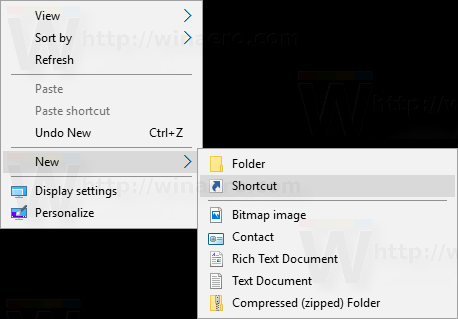
- In the shortcut target box, type or copy-paste the following:
explorer ms-settings:themes
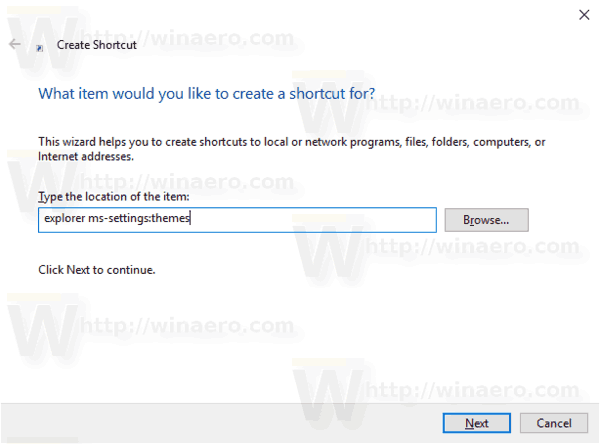
- Name your new shortcut as Theme Settings. Actually, you can use any name you want. Click on the Finish button when done.
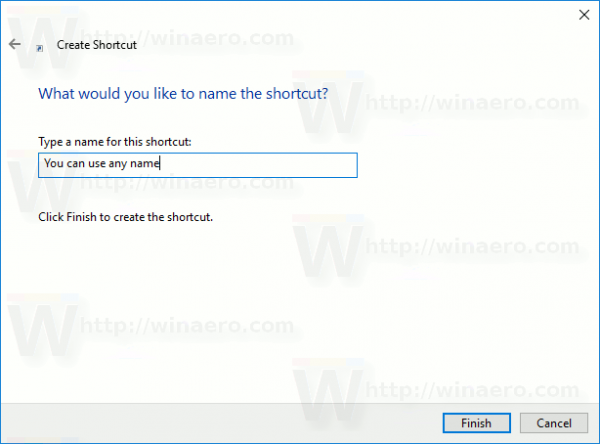
- Now, right click the shortcut you created and select Properties.
- On the Shortcut tab, you can specify a new icon if you wish. You can use any icon from the c:\windows\system32\themecpl.dll file as shown below.
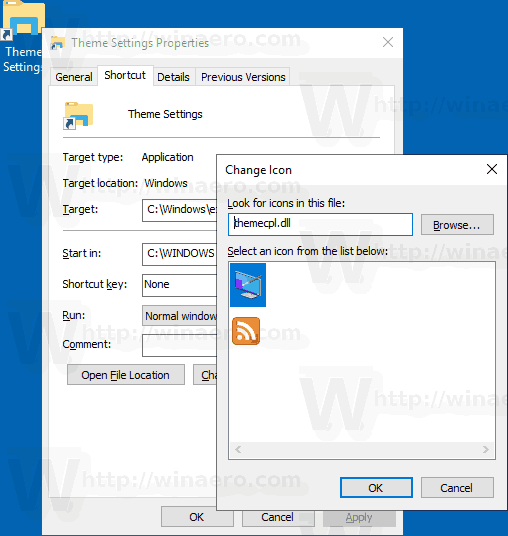
- Click OK to apply the icon, then click OK to close the shortcut properties dialog window.
You are done. Double-click on the shortcut to open the following page:
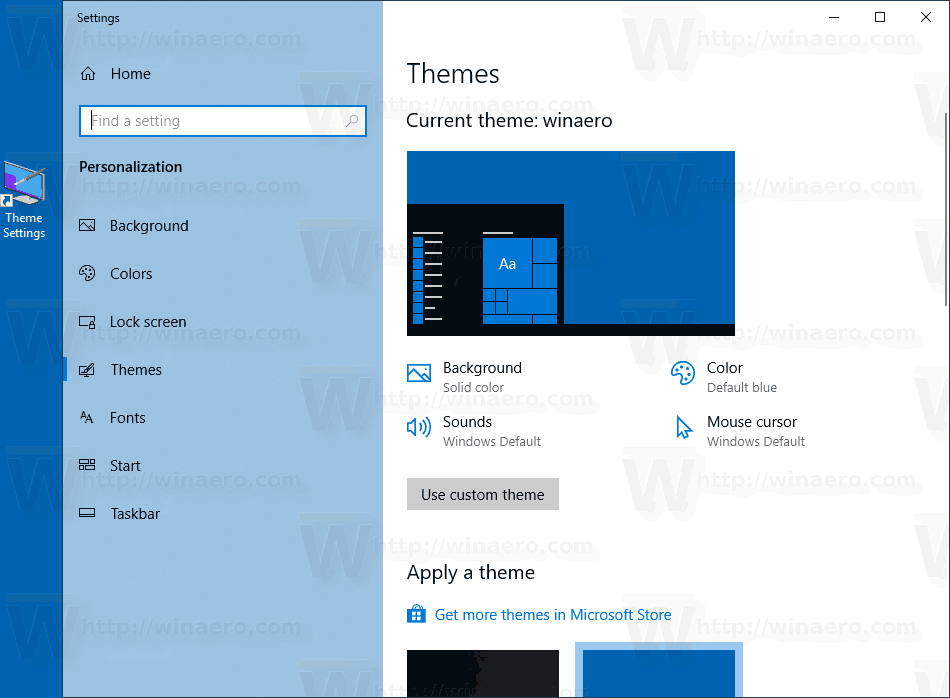
From there, you can customize all the options related to the appearance of the OS.
The classic Personalization dialog
Alternatively, you can create a shortcut for the classic Personalization dialog.
When creating the shortcut, use the following command as the shortcut target:
explorer.exe shell:::{ED834ED6-4B5A-4bfe-8F11-A626DCB6A921}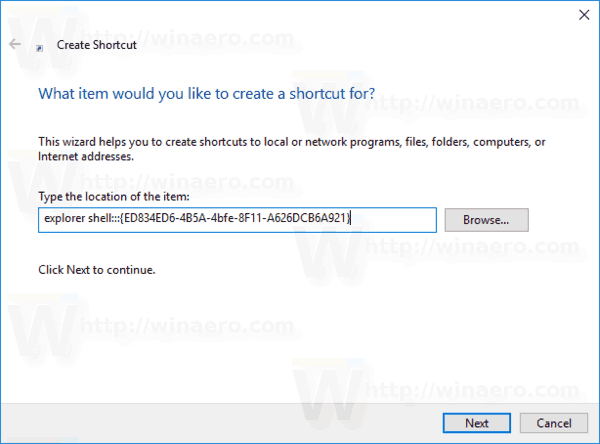
This will open the following dialog.
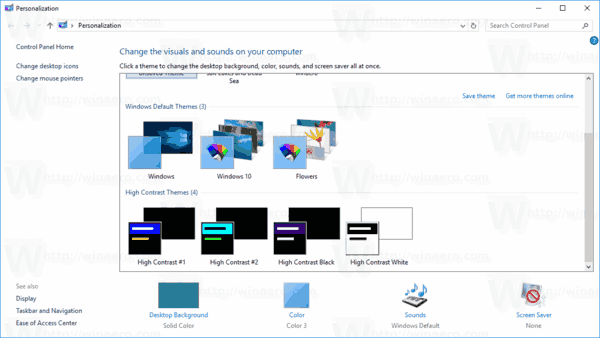
Unfortunately, all its commands still open the modern Settings pages. You may want to add a special Desktop context menu in addition to the shortcut you created which will open the classic applets. See
Add classic personalization Desktop menu in Windows 10
Now, you can move this shortcut to any convenient location, pin it to taskbar or to Start, add to All apps or add to Quick Launch (see how to enable Quick Launch). You can also assign a global hotkey to your shortcut.
The command we used is a special ms-settings command. Almost every Settings page and other GUI parts in Windows 10 have their own URI, which stands for Uniform Resource Identifier. This allows you to open any Settings page or feature directly with a special ms-settings command. For reference, see
ms-settings Commands in Windows 10
That's it.
Related articles:
- Create Classic Personalization Shortcut in Windows 10
- Add Personalization To Control Panel In Windows 10
- Add classic personalization Desktop menu in Windows 10
Support us
Winaero greatly relies on your support. You can help the site keep bringing you interesting and useful content and software by using these options:

How do you actually find these things out (Besides googling for them)?
I guess the modern settings app is a bit easier to uncover, but what about the classic CP with these long strings?